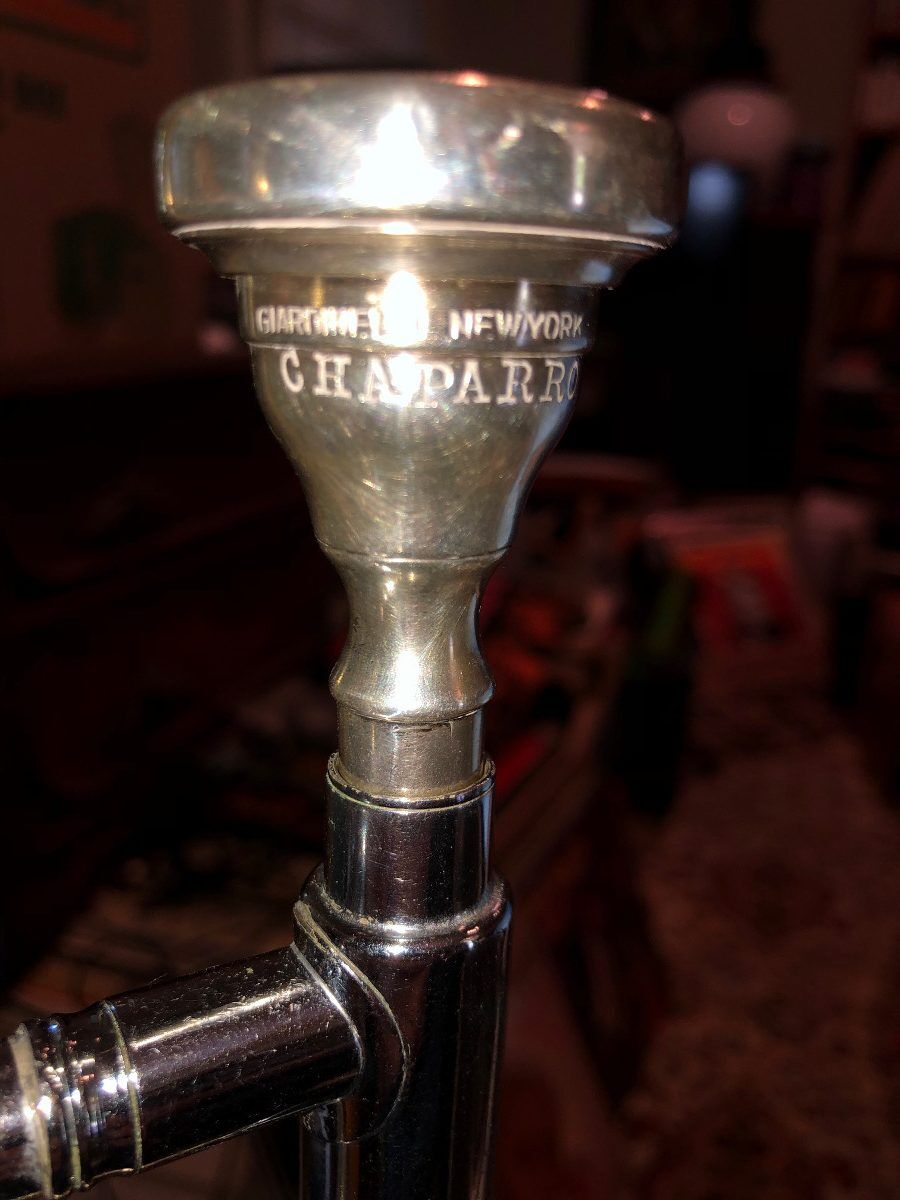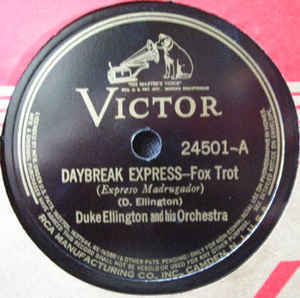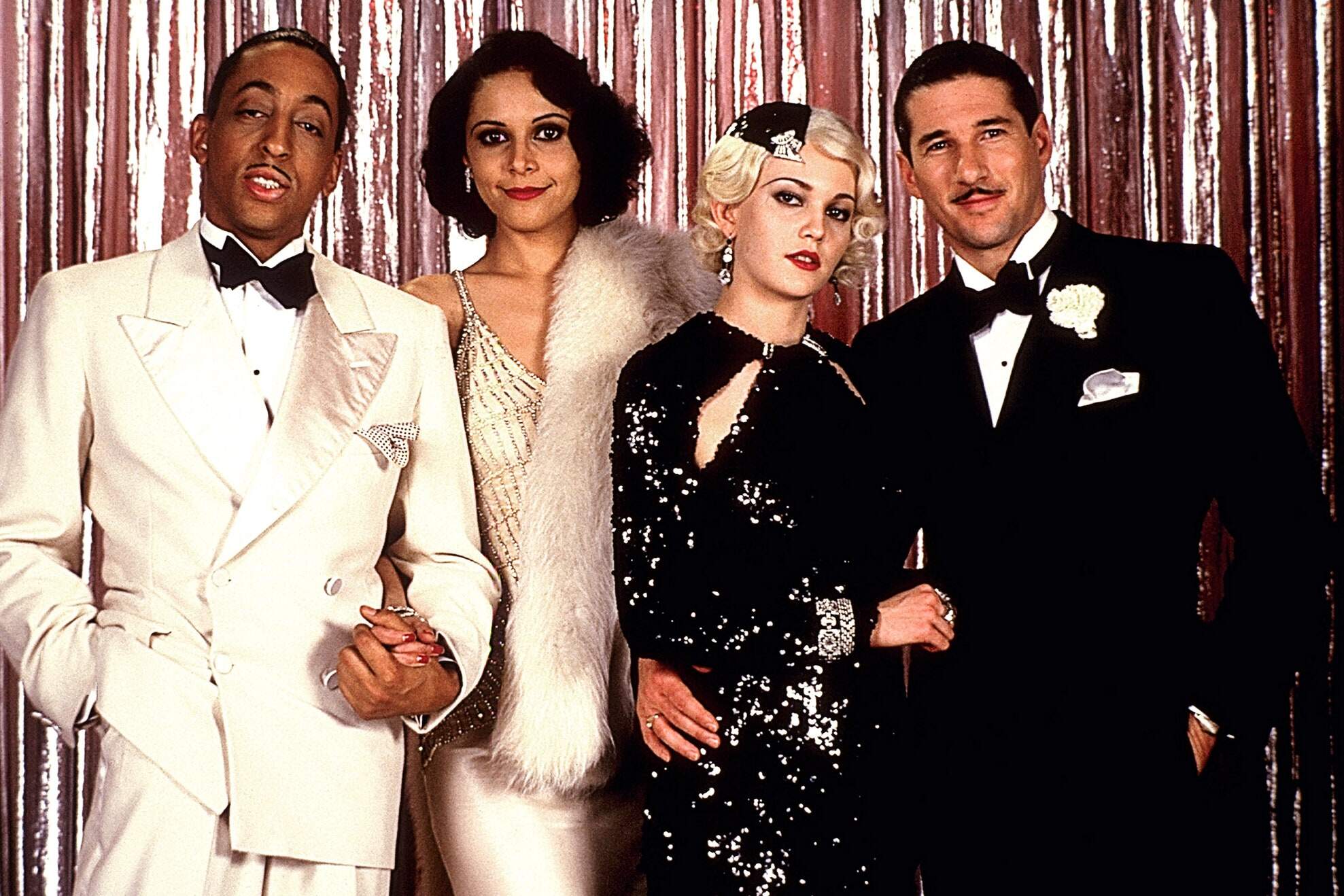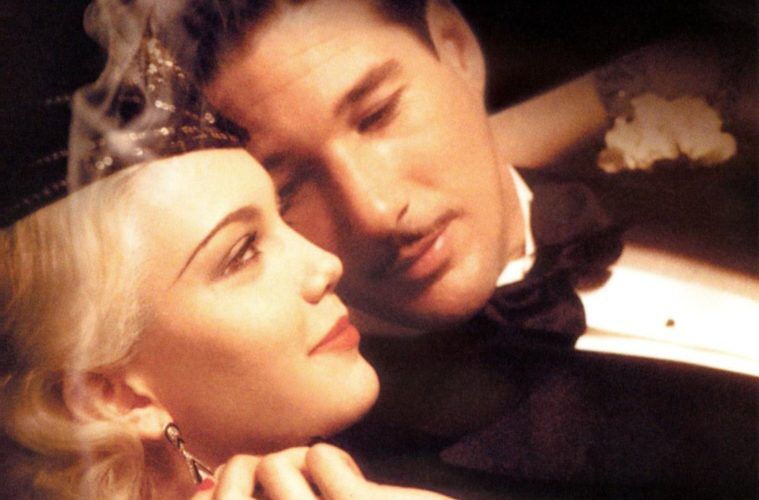See, Part 1
A Real New York Story
We had been recording double sessions, often earning overtime to complete more difficult or complicated arrangements. We had finally finished the first exhausting full week of recording, and things were going well. The band was superb. Working with people like Bob Wilber and John Barry was a learning experience every day.
My “big solo” was behind me. No more features to worry about, with everybody staring at me. I could relax, and I did, often joining Chuck Wilson, Laurie Frink, Joel Helleny, and others for more than a few beers after a second session was over.
It was after one such beer-fueled rendezvous that I carefully made my way from the watering hole du jour out to the curb. It was late: I was making money, and I decided to spring for a taxi back to our place in Queens instead of taking the subway. It was the 1980s, and one didn’t really want to get on a subway with a musical instrument like mine after it got very late. (The trumpeter Spanky Davis called late-night taxis “cheap insurance.”)
I climbed into the back seat of a huge yellow Checker cab. Man, I miss those big old Checkers! The cabbie flipped his flag down (it’s all electronic these days), and asked,
“Where to, man?”
I gave him our address and off we went. The cabbie looked like a member of the cast of Hill Street Blues. He was thirty-five or forty, slender, and was wearing a tweed vest, white shirt, and an old-fashioned tweed “newsboy’s” cap. He had rimless glasses with gold frames. The cabbie from Central Casting! I had my odd, dark brown, cylindrical case set up vertically on the seat beside me. I eventually noticed the cabbie kept looking at his rear-view mirror. I finally noticed he was checking out the old case. Then he asked me, “Hey, man! Is that a valve trombone?”
Now, I thought that was strange. Remember, when I saw that old case in the dark corner of that Eighth avenue pawn shop, I didn’t even think it was a trombone case! It was my hip wife, Laura, who spotted it.
I said, “Yes, as a matter of fact, it is. Not many guys would know that. Do you play valve trombone yourself?”
“Oh, no. But I like music. A while back, I had a drinking buddy who played in a few of the Latin bands in town. He was really a good player.”
“Oh, yeah?,” I said. Then I asked, “What was his name?”
Here it comes.
The cabbie looked right at me in the rear-view mirror, and said, “Ralph Chapparo.”
 After all these years, I still remember that moment. What are the odds? My blood stopped moving in my veins. I think I actually gasped. But I knew I had to stay cool.
After all these years, I still remember that moment. What are the odds? My blood stopped moving in my veins. I think I actually gasped. But I knew I had to stay cool.
“Chapparo, huh? No, I don’t think I know him…” I felt just terrible lying to the guy, but I felt I had to. I’d put it all together in mini-seconds. I’d been wondering who would pawn a beautiful horn like that— a custom job, not a mark on it, with virtually new silver plating—and not ever go back to claim it.
My scenario was this: someone stole the horn from Ralph Chaparro. They fenced it at the pawn shop, where it languished in that corner until Laura saw it and thought that it might just be a valve trombone inside that unusual case.
Now, I’d have to somehow find Ralph and get it back to him, or I’d never be able to live with myself. Trustworthy, Loyal, Helpful, and all that. The trouble was, I had at least another week of recording, and no time to go out looking for—and get used to—another horn! Besides, anything else I might find wouldn’t be nearly as good an instrument; I’d already been through all that.
Judging from the tarnish when I bought it, that trombone had been collecting dust at that pawn shop for at least a few years. So, I decided poor Ralph would have to live without it for just a couple more weeks. I might even give him some “rental” money when I brought it back to him.
As I said, all this drama passed through my mind in just a few seconds. With my conscience as clear as it was going to get, I cleared my throat.
“So,” I said. “What do you hear from ol’ Ralph these days?” Nonchalant.
The cabbie looked at me again in the rear-view, and laughed.
“Oh, God. I haven’t seen Ralph in…I bet it’s been ten or twelve years! The last I heard, he was selling everything he owned for a ticket back to Venezuela.”
The relief I felt was something like the very last note of “Pyramid” the day we recorded it. The cabbie dropped me off, and I had a good story for Laura about “her” horn.
Note: I want everyone to know (especially Ralph Chapparo, if he ever reads this!) that even before the sessions were over, I started a search for him in New York City and local towns in New Jersey. Laura called Information in many cities, and spoke with a number of Chapparos; no relations or acquaintances.
I first called Musician’s Local 802 in Manhattan, and several other Musician’s Unions in New York and New Jersey. Nada.
So, I still have Mr, Chapparo’s beautiful trombone, and his custom Giardinelli mouthpiece. I hope I’ve given them a good home all these years.
The Last Day of Recording
We all showed up on time and ready for what would be our final full day of recording. Everyone was in good spirits as we assumed our familiar seats. We all noticed that the large television monitor, which usually faced Bob, was now turned around so we—the band–could see the screen. It was set on a tall rolling cart, and positioned just to the left (our left) of where Bob stood at the conductor’s music stand.
Bob saw the question marks over our heads. He said, “Well, it’s the last day. I want to thank all of you for the superb job you’ve done.” Someone shouted out, “You too, Bob,” and there was applause. Bob continued.
“Now…I’ve scheduled this entire session to be used for this one last number. We might even need part or all of the second session for it, as well; I hope not, for we still have some overdubs, vocals, and a few other things to do at that time.”
Someone asked the obvious question, “Why a whole session for one number?”
Bob said, “This is hard to tell you. I know you’re all great musicians, but I have to ask you to do something that’s…well…I hope it’s possible.”
We all looked around at each other, and Bob went on.
“Here’s the deal: the big, grand finale number of the movie is a flag-waving, all-stops-out production number, which takes place at Grand Central Station. We sent out cassette tapes to each of you. Did you all have a chance to hear it?” A few of us murmured noncommittally.
 “Well, the tape was of Ellington’s original recording of ‘Daybreak Express.’”*
“Well, the tape was of Ellington’s original recording of ‘Daybreak Express.’”*
“Oh, man!” one of the trumpet players said. “That’s that really fast train piece. Like ‘Chattanooga Choo-Choo’ on steroids!” Everyone laughed at that. I noticed Bob wasn’t laughing, though. He was genuinely concerned about something.
“See,” Bob said, “what happened is this: when they shot the scene at Grand Central, they had the dancers, and actors, and everyone in the scene—including the musicians appearing onscreen, sidelining to what we’ve been recording—all dancing and acting and sidelining to a cassette tape of Ellington’s recording of Daybreak Express. The trouble is, it seems that when the tune was first recorded onto the cassette tape, the cassette player wasn’t plugged in. It was using batteries. The batteries were probably weak. So it recorded the number a little…slower.”
Bob looked around at us and continued. “When they brought the cassette player to Grand Central Station for the big scene and plugged it in, it ran about a third again faster than the original. This is what the dancers danced to, and what everybody “synced” to, and what was filmed. It’s all done. They had to shut down Grand Central for the filming! There’s no way for them to do it again.”
Bob let that sink in. “So, we have to record it at that tempo. A good third faster than the original.”
I remember sitting there, noticing how quiet everyone was. That was a little unnerving. If these guys—among the best in New York—felt challenged…well, I just hoped I wouldn’t start shaking again. Once was enough.
Bob showed some good bandleading chops when he said, “I have great respect for all of you. So much so, in fact, that I want to ask you—any of you—for your ideas as to how we might best accomplish this. Do you want to rehearse it all at once, or—”
“Bob,” Chuck Wilson interrupted. “This is a big facility. I’d suggest you let each section separate, and practice among themselves until, say, lunch. Then we meet after lunch, and work on it all together.”
And that’s what we did. Trumpets in one room. Saxes somewhere else, Trombones in another spot, and the rhythm section staying in the main room, for that’s where the piano and drums were set up. Each section rehearsed it over and over again by themselves, starting slowly and eventually picking up the tempo until we were pretty close to the crazy speed of the tape. Then we met after lunch, and we finally played “Daybreak Express” at that ferocious tempo you hear in the movie. To my ear, we played it pretty well.
Fade To Black
Stanley Crouch is a jazz writer and critic, currently associated with the Lincoln Center Jazz Orchestra. Mr. Crouch is known for his appearance in Ken Burns’s Jazz documentary. Cotton Club had been out for a few weeks when we heard that Mr. Crouch had written a full-page review of the music recorded for Cotton Club. It was published in the now-defunct Village Voice. The title of his review still smarts a bit: “The Rotten Club.”
The gist of his vitriolic review was that although black musicians were depicted onscreen as members of Duke Ellington’s Famous Orchestra (as it was known then), only white players had been used on the soundtrack.
Well, this simply was not true. I’ve already mentioned Britt Woodman in the trombone section, and Frank Wess in the sax section. It was the great Gregory Hines’s tap dancing you hear in our version of “Copper Colored Gal.” There were a few other musicians of color who were present on various days. I don’t recall them all, just as I don’t recall all the white cats. This was a long time ago!
Trumpeter Randy Sandke—who has written his own book about racism in jazz, and is an unusually witty, erudite fellow—wrote an intelligent and measured response that was published a few weeks later. Randy explained that Bob had called guys who he knew were intimately familiar with the music of Duke Ellington from this specific period. (I.e., there aren’t many guys—black or white—who could use a plunger like Joel Helleny. There’s Wycliffe Gordon, of course, who has become another mute master.
However, Wycliffe was born in 1967. He was about fifteen or sixteen years old when we recorded that soundtrack, so he wasn’t “on the scene” until a few years later. (We’d all find out about him soon enough!)
For my own part, I have memories of staying up many nights back in high school, trying to transcribe “The Mooche,”** and later on memorizing several of Lawrence Brown’s trombone solos. Although it seems surreal now, I actually knew Ellington’s clarinetist Barney Bigard and his wife, Dottie. I’d played many gigs with Barney around Los Angeles when I was first getting started. I’ll never forget their kindness. Really, I was nuts about that band in all its manifestations. Still am, in fact.
Bob Wilber had studied with the New Orleans jazz legend Sidney Bechet, even going on to perform and record with Bechet and countless other black jazz artists. In all the gigs at which I performed with Bob, including jazz parties and festivals around the world featuring wide ranges of diversity, I never once saw or heard Bob say or do anything that could even be remotely construed as “racist.” He simply wasn’t that kind of guy.

I’ll have to paraphrase what Randy wrote next, but I think I’ll be pretty close. He went on to say that if a young black trumpet player (for instance) had shown up in New York City who could play like Bubber Miley or Cootie Williams, he (or she) would be “welcomed with open arms.” Randy went on to say if such a person existed, the traditional and swing community in New York hadn’t heard of him or her yet.
The controversy had a few unpleasant aftershocks in print, and mercifully died of its own accord. Most of the informal “reviews” I’ve heard from friends agree that the music was very good, but the movie itself left something to be desired. A final thought about all this might be what Clark Terry said about music. That is, a note doesn’t know if it was a white cat or a black one who played it. The note only knows if it was played right or not.
Take the Coda
The film had been out for several months when Laura and I flew back to California for a visit. We stayed with my parents, and we all agreed to go see the movie together. My older brother Ed agreed to join us. He likes movies all right, but he’d heard Cotton Club might be somewhat violent in places. He’s a little squeamish when it comes to stuff like that.
My father, Edward Anthony Barrett (my brother is Edward George) wore a jacket and tie to the theater! My mother Dorothee (yes, that’s how she spelled it) had her hair done earlier that day, and was all decked out as well. Frankly, I don’t think either of them had been to the movies in quite a while. We got our popcorn and found adjacent seats. It was easy to do; Cotton Club had been out for some time, and wasn’t doing great at the box office.
In one of the first scenes, Robert DeNiro (portraying Al Capone) has words with a guy sitting at a table. He comes up with a baseball bat, and clocks the guy on the side of the head. Blood and brains go all over the walls. I’ve got to give credit: the special effects were amazing. My brother hid his head in his hands. I felt awful for him.
We stayed with it, though. My mother was sitting on my right. I’d told my parents that I might have a big long solo number in the movie, if it hadn’t been cut. Having not yet seen the movie, I didn’t know where it might be used, or if it was used at all. A muted trumpet began to play.
My mother leaned over and quietly asked, “Danny? Is that you?”
I shook my head. “No, Mom. That’s Randy Sandke on trumpet.” She discreetly adjusted her hearing aid.
A little while later, she leaned over toward my father and said, “Oh, Edward! That’s Danny’s solo!” My Dad gently shook his head and I leaned over and said, “Mom, that’s Frank Wess on tenor saxophone. It’s in the same range as a trombone…” Again she fiddled with her hearing aid.
 Finally, toward the end of the flick, we all watched as Richard Gere and Lonette McKee began making out. It got pretty steamy and I think I blushed, sitting there between my wife and my mother. We watched as the panting couple smooched their way upstairs to a bedroom. Clothes began being discarded, and the pair fell onto the bed.
Finally, toward the end of the flick, we all watched as Richard Gere and Lonette McKee began making out. It got pretty steamy and I think I blushed, sitting there between my wife and my mother. We watched as the panting couple smooched their way upstairs to a bedroom. Clothes began being discarded, and the pair fell onto the bed.
While they were rolling around, we heard a snare drum being played softly—with hands. Then my nervous valve trombone made its entrance. I looked over at my mother. She was watching the love scene in a resigned way. We sat for a while. I looked over at her again.
On the soundtrack, I was about halfway through “Pyramid.”
“Mom,” I whispered urgently. “That’s me! This is ‘Pyramid,’ my big solo number!”
Gere and McKee were in the throes of passion. My mother continued looking at the screen for a few more seconds, and then she looked over at me. She looked back at the screen. Out of the side of her mouth she said, very dryly:
“It figures.”
In a lifetime spent with musicians, and hearing many very funny jokes and anecdotes still think that’s one of the funniest things I’ve ever heard. Good on ya, Mom!
*File is: Duke Ellington And His Orchestra Daybreak Express Chicago, Dec 4, 1933 Victor 24501
Arthur Whetsol, Cootie Williams, Louis Bacon (tp) Joe “Tricky Sam” Nanton, Lawrence Brown (tb) Barney Bigard (cl,ts) Johnny Hodges (as,sop) Otto Hardwick (as,cl,bassax) Harry Carney (bar,cl,b-cl) Duke Ellington (p) Fred Guy (g) Wellman Braud (b) Sonny Greer (d)
**File is: The Mooche- Duke Ellington’s Cotton Club Orchestra NY, Oct 30, 1928 Victor 24486
Freddy Jenkins, Arthur Whetsol (tp) Joe “Tricky Sam” Nanton (tb) Barney Bigard (cl,ts) Johnny Hodges (as,sop) Harry Carney (bar,cl,as) Duke Ellington (p) Fred Guy (bj) Wellman Braud (tu) Sonny Greer (d).
It was Ellington’s third studio version of the the title that month, the first that began to sound a bit more like later recordings.
Dan Barrett is a professional trombonist/ cornetist, arranger, and composer. He enjoys performing in admittedly old-fashioned jazz styles. He has recorded for Concord Records, Arbors Records, and his own Blue Swing Recordings label, among many other labels. Dan fell in love with jazz in high school, and learned to play from much older musicians from New Orleans, who had settled in the Los Angeles area. He has played at Carnegie Hall five times, and was featured in the last bands led by Swing Era icons Benny Goodman and Buck Clayton. Another highlight of Dan’s musical life—so far—was being a member of Lueder Ohlwein’s Sunset Music Company. Write to Dan at: www.DanBarrettMusic.com.






















